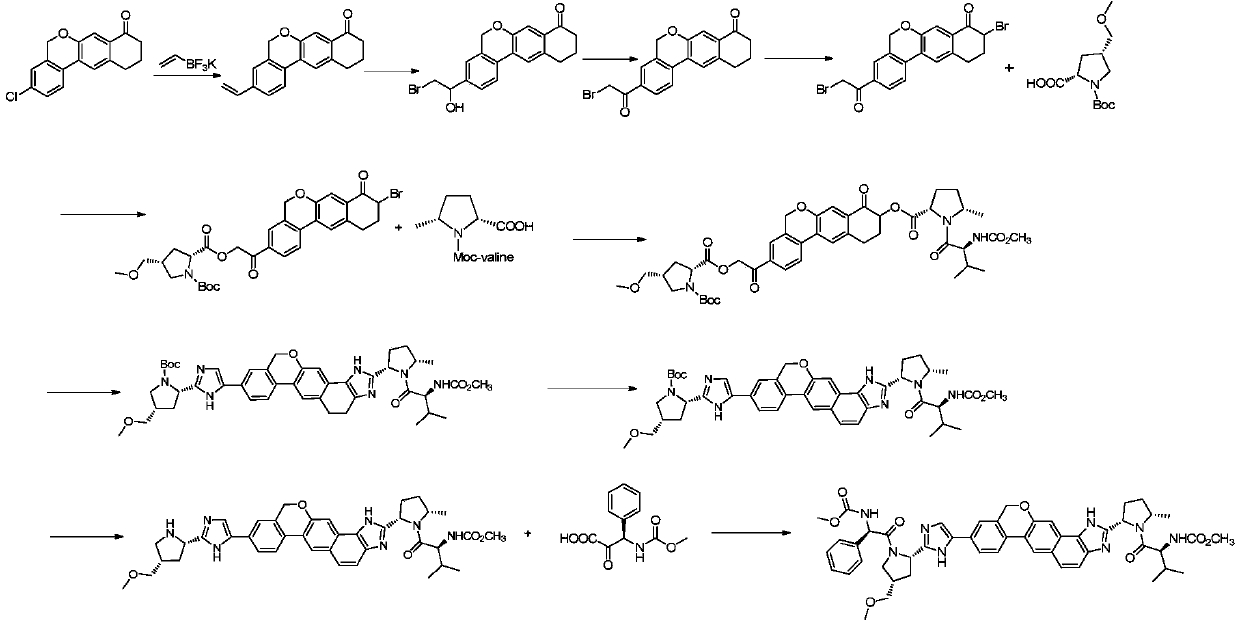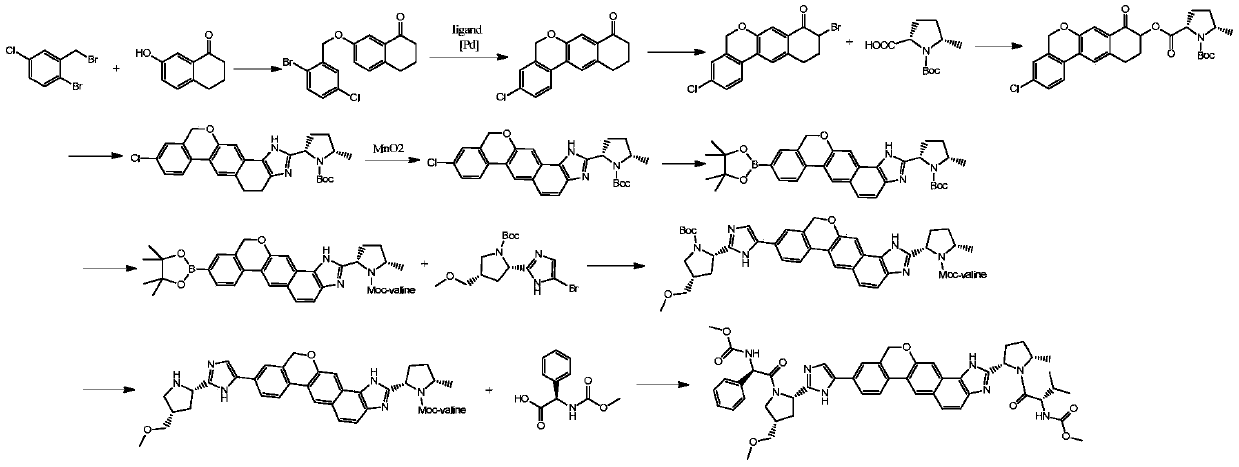Preparation of velpatasvir and its derivatives
A technology of velpatasvir and derivatives, which is applied in the field of drug synthesis, and can solve the problems of difficult industrialization, many side effects, and high cost of velpatasvir
- Summary
- Abstract
- Description
- Claims
- Application Information
AI Technical Summary
Problems solved by technology
Method used
Image
Examples
preparation example Construction
[0087] The preparation of formula 1 compound
[0088] The inventor realizes by following technical scheme (shown in route four):
[0089]
[0090] In the method of the present invention, the compound of formula 5 is prepared by condensation of the compound of formula 7 and the compound of formula 6 under alkaline conditions; the compound of formula 5 is subjected to ring closure reaction with ammonia or its derivatives at high temperature to prepare the compound of formula 4; the compound of formula 4 and Substituting reagents, carbonyl α-position substitution occurs, and the compound of formula 3 is obtained; the compound of formula 3 is condensed with compound 8 under alkaline conditions to obtain the compound of formula 2; the compound of formula 2 undergoes ring closure reaction with ammonia or its derivatives at high temperature , to prepare the compound of formula 1; the compound of formula 1 is oxidized or oxidized-deprotected to obtain VLP-1, and VLP-1 is condensed ...
Embodiment 1
[0127] Embodiment 1: synthetic compound 5a
[0128]
[0129] Add 3.7g of compound 7, 2.85g of compound 6a, 2.76g of potassium carbonate, and 55.5ml of dichloromethane into a 100ml reaction flask, heat to 30-35°C, stir for 16 hours, monitor the disappearance of the reaction material 7 by LC, add water to quench reaction. The reaction mixture was washed with water, dried over sodium sulfate, and concentrated to obtain compound 5a (5.68 g, purity 96.58%, yield 100%).
Embodiment 2
[0130] Embodiment 2: synthetic compound 5b
[0131]
[0132] Add 3.7g of compound 7, 3.3g of compound 6b, 2.76g of potassium carbonate, and 55.5ml of dichloromethane into a 100ml reaction flask, heat to 30-35°C, stir for 16 hours, LC monitors that the reaction material 7 disappears, and add water to quench reaction. The reaction mixture was washed with water, dried over sodium sulfate, and concentrated to obtain compound 5b (5.45 g, yield 98%).
PUM
 Login to View More
Login to View More Abstract
Description
Claims
Application Information
 Login to View More
Login to View More - R&D
- Intellectual Property
- Life Sciences
- Materials
- Tech Scout
- Unparalleled Data Quality
- Higher Quality Content
- 60% Fewer Hallucinations
Browse by: Latest US Patents, China's latest patents, Technical Efficacy Thesaurus, Application Domain, Technology Topic, Popular Technical Reports.
© 2025 PatSnap. All rights reserved.Legal|Privacy policy|Modern Slavery Act Transparency Statement|Sitemap|About US| Contact US: help@patsnap.com



